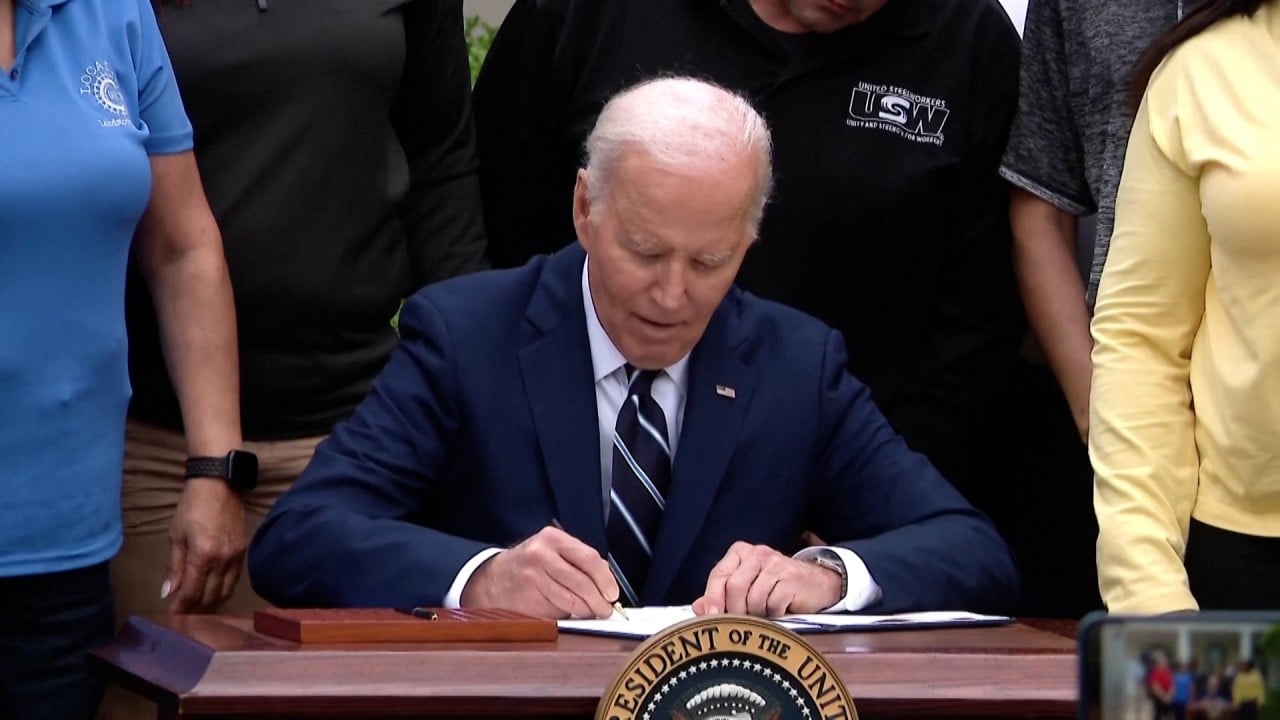Designated by the country’s Ministry of Agriculture and Rural Affairs as a seed producer entitled to special financial support, Ling’s company – which he declined to name, as he has not been authorised to speak to the media – has yet to make any breakthroughs.
“It’s not easy to achieve in just a few years,” he said. “But I think it’s worth the effort, as it means Chinese farmers will have access to cheaper seeds of our own making.”
Four years have passed since the term first entered the lexicon, and progress has been visible in some fields, but researchers and observers said it will take far longer to see concrete results in most areas.
“China is running quickly as it tries to swap Western technologies with its own, but even at a quick speed, it won’t catch up for a decade or two because it started late,” said Zhang Jun, dean of the Fudan University School of Economics.
China accounts for less than 10 per cent of the global supply for 5-axis computer numerical controlled machines, the most advanced cutting tools in high-speed machining, according to a research note issued by Sinolink Securities in March. The world market value for these tools was estimated at US$7 billion.
For the numerical control systems which govern those tools, China represents a market of over 21 billion yuan (US$2.9 billion) per Sinolink’s projections of 2021 value. Three-quarters of that lucrative sector, however, is presently held by foreign companies.
About 60 per cent of telecoms hardware has been made domestically, though software substitution has been slower due to poorer comparative performance from home-made options, research firm EO Intelligence said in a September report.
Progress in building up “internal” circulation can be seen in “consumer preference for Chinese movies, cosmetics, vehicles and so on that better reflect local values, deliver quality and are sold at lower price points”, said Han-Shen Lin, China country director at Washington-based consultancy The Asia Group.
“This has forced multinationals to assess how local they should go to tap into the China market, because they realise the days of foreign brands easily charging premium prices are numbered,” he said.
“This excess will need to be exported,” he said. “Hence, China depends on the rest of the world to stay open, and in return, China will need to as well.”
Chen Fengying, a researcher with the China Institutes of Contemporary International Relations think tank – an institution with ties to the country’s Ministry of State Security – said emphasis on the domestic market is a choice forced by circumstance, as “external” circulation is not as reliable as it once was.
“We’re now doing business with a lot of small countries. But 100 small countries may not be equivalent to one big country,” she said.
The European Union and US contributed a respective 12.7 per cent and 10.6 per cent of the mainland’s total foreign trade value during the first four months of the year according to Wing Chu, an economist with the Hong Kong Trade Development Council.
China has been shifting quickly to rely on domestic demand for growth in recent years, but there appear to be greater challenges on the external side
Despite a more stable global economic landscape, future growth in China’s foreign trade “could potentially be shadowed by uncertainties such as geopolitical developments, as well as ongoing trade disputes between China and the US, and other trading partners,” he noted.
Concurrence came from Chen Zhiwu, chair professor in finance at the University of Hong Kong. “China has been shifting quickly to rely on domestic demand for growth in recent years,” he said, “but there appear to be greater challenges on the external side.”
At the highly anticipated third plenum next month, officials “will be using the word ‘reform’,” he said, “but no matter what decision they make, more decoupling [from the US and Europe] will remain a basic policy direction.”
As China is expected to keep up its inward-looking approach, no major shift is anticipated in US policy towards China, its only competitor, said Zhang, the Fudan University professor.
“With a big economy and talent pool, China will eventually transition out of relying on imported technologies, and bad US-China relations only made this transition happen earlier than previously expected,” he noted.
As China’s quest for self-reliance continues, it needs a loose policy environment to induce innovation of all types, said Bai Chongen, dean of Tsinghua University’s School of Economics and Management.
“We can’t require everyone to pursue the same type of innovation, such as pushing all businesses to solve ‘chokepoint’ issues, otherwise other types of innovation would be squeezed out,” he said in an interview with NetEase last month.
He was referring to a widespread obsession with the “0 to 1” principle of innovation -creating something wholly new – a philosophy he said has mired the work of many Chinese scientists and companies. Taking something that already exists and improving it in the “1 to n” mode, he added, is just as important and a practice where China has proved itself.
Ling, the employee at the Shanghai seed company, said it will take at least three more years for the company’s carrot research team to escape the “0 to 1” trap.
“Even after we succeed in developing a new seed,” he said, “it still needs time to be commercially applied.”



